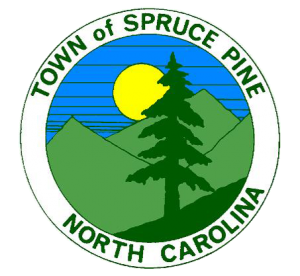How much water do I use?
5 Minute Shower
regular shower head -30 Gallons
low-flow shower head/restrictor-15 gallons
wet down, rinse off- 4 Gallons
Toilet Flushing
conventional toilet – 5 to 7 gallons per flush
displacement bag – 4 to 6 gallons per flush
ultra-low flush toilet – 1.5 gallons per flush
Brushing Teeth
tap running – 10 gallons
wet brush rinse briefly – ½ gallon or less
Tub Bath
full tub – 60 gallons
minimal water level – ½ gallon or less
Shaving
tap running – 20 gallons
fill basin – 1 gallon
Washing Hands
tap running – 20 gallons
soap and rinse – 1 gallon or less
Dishwashing
tap running – 30 gallons
wash and rinse in dishpan or sink – 5 gallons
Automatic Dishwashing
full cycle – 15 gallons
short cycle – 1.1 gallons
Washing Machine
full cycle – 60 gallons
short cycle and minimal water level – 25 gallons
30 Things You Can Do To Save Water
- Shorten your shower. A one or two minute reduction can save up to 700 gallons of water each month. If possible, take a shallow bath instead of a shower for even greater savings.
- Replace your showerheads with low-flow showerheads or install flow restrictors. Both can be found at your local hardware store.
- Put trash in the wastebasket, cigarettes in an ashtray – don’t flush! Each time you flush a small bit of trash, you waste five to seven gallons of water.
- Check for leaks in your toilets. Drop a dye tablet in your toilet tank, or add a few drops of food coloring. If the color begins to appear in the bowl, without flushing, your toilet has a leak that could be wasting thousands of gallons of water per year. Repair those leaks!
- When brushing your teeth, wet your toothbrush, then turn off the water.
- Rinse your razor in a partially filled sink instead of under a running tap.
- Check faucets and pipes for leaks. Replace worn washers- even a small drop from a worn washer can waste 20 or more gallons a day. Larger leaks can waste hundreds.
- Put a plastic bottle in your toilet tank. Fill the bottle with water and a small amount of pebbles (to weigh it down) and place in your tank, away from the operating mechanisms. Your plastic bottle can save you 10 or more gallons each day.
- While waiting for your bath water to get warm, place a bucket under the faucet to catch the cold water. Use later to water your houseplants.
- Building or remodeling your home? Ask your builder to install ultra-low flush toilets and faucets.
- Keep a bottle of water in the refrigerator for drinking. Don’t run the tap waiting for cold water.
- Rinse vegetables in a pan of water- not under a running faucet.
- Use your dishwasher and washing machine for full loads only.
- Never leave the water running if you wash dishes by hand. Fill one sink with soapy water and one with rinse water. If you have only one basin, use a dish rack and rinse with hot water.
- Use the smallest amount of detergent possible when washing dishes by hand. This reduces the amount of rinse water needed.
- Check your Kitchen/Bath pipes and faucets for leaks and replace worn washers immediately.
- Use garbage disposal less and the garbage more often.
- Defrost frozen foods in the microwave or refrigerator, instead of under running water.
- Water your lawn in the early morning or evening when there is less chance of evaporation.
- Plant drought resistant native trees and plants. There are many beautiful plants and trees that thrive on smaller amounts of water.
- Don’t let your children play with the hose and sprinklers.
- Place a layer of mulch around trees and plants. Mulch slows evaporation of moisture and discourages weed growth.
- Don’t water your lawn on a windy day to prevent excessive evaporation.
- Set lawn mower blades one notch higher since longer grass means less evaporation.
- Don’t water the sidewalk. Adjust the sprinkler so they miss the sidewalk, street and driveway and hit the grass for a free drink.
- If you have a pool, use a pool cover to cut down on the evaporation.
- Water only when your lawn really needs it. If the grass springs back after you step on it, there’s no need to water. If you would like to install a water efficient irrigation system, call al landscape architect- 85% of landscape problems are directly related to over-watering.
- Check for leaks in hoses, faucets, pipes, and couplings. Outside leaks can waste just as much and sometimes more water than those on the inside.
- Sweep sidewalks and driveways, don’t hose them down.
- Wash your car with a pail of soapy water – not a running hose. Use the hose for rinsing only.


